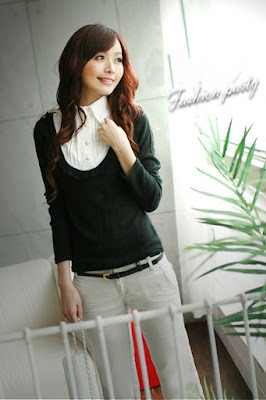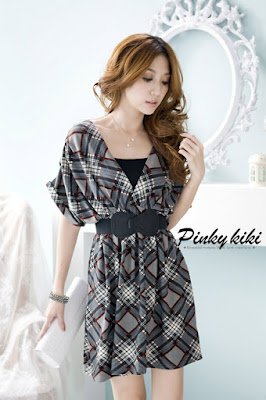QUOTE(Yasmin @ 2009 05 06, 17:34)
Man taip sunku rasti suknelę į darbą

Jei rasite, pasirodykite

Aš nusiprendžiau siųtis pas siuvėją

QUOTE(PauleeLu @ 2009 05 20, 14:30)
Mergickos, vat db paciai iskilo tokia dilema, ainu i nauja darba nuo liepos ir pasake, kad jie reikalauja "smart casual" aprangos... nu vat as kazkaip galvoju ka cia tokio pasirinkus, nes nu vistik dar jauna esu, o niuriais kostiumeliais rengtis nesinori...
Tai,kad Smart casual nėra kostiumėliai

Čia gi daugiau stilingi kasdieniniai rūbąi (na kažkur tarp gatvės mados ir labai formalios aprangos). Kai kuriais atvejais toleruotini net džinsai. Drąsiai gali rinktis dailias sukneles, kelnes įdomesnes ir palaidines, Sijonus ir t.t. Taip pat galima paderinti džinsus + švarkelį ar marškinukus ir pan. Svarbiausia, kad rūbai būtų stilingi, tvarkingi ir nenunešioti. Aišku ir ne gatvės mada.
Va ką randu:
Elegantiškasis (smart casual), pasak aprangos specialistų, yra klastingas stilius, kur nėra griežtų taisyklių ar draudimų. Šis stilius - tobulumo siekis puoselėjant savo įvaizdį. Geriausias būdas atitikti šį aprangos kodą - rengtis paprastai, pavyzdžiui, vilkėti gerus džinsus, pagyvinti aprangą originaliais aksesuarais. Nerizikuokite rinkdamasi sportinio stiliaus drabužius, nors ir su prabangia etikete.
(
http://www.lrytas.lt...7...ienÄms.htm )
Wikipedia ką duoda:
Smart casual (as distinct from business casual) is a loosely defined dress code, casual, yet "smart" enough to conform to the particular standards of certain Western social groups.[1]
Example of a smart casual look.As "smart casual" is not formally defined, the lines between it and the other casual styles (see Dress code (Western)) are often blurred. For example, some may use the term smart casual interchangeably with business casual.
It has been suggested that smart casual for men consists of dress trouserssome, but not all definitions may allow jeans or chinos[2]a long-sleeve dress shirt[3] (tie optional), leather loafers or dressy slip-ons, dress socks, a belt, and, if appropriate, a sport coat. For women, it consists of slacks, jeans or a skirt (long or short), a blouse or turtleneck, a fashionable belt, a jacket, a vest, or a sweater coordinated to your outfit, hosiery or socks with boots, flats (leather, suede, or fabric) or mid-heel shoes. Women may also wear jewelry, such as earrings that complement their overall outfit, at least. This category demands a pulled-together, harmonious, complete look with colors, fabrics, shoes, and accessories, for both men and women. [4]
Formality is subjective, and in some places, the above would describe 'casual', with smart casual requiring a jacket and tie.
[edit] In academia
Smart casual is preferred code of dress in academic circles, especially for events which involve speaking in front of an audience, such as lectures or presentations on scientific conferences. The general idea of this dress code is to convey a certain level of informality necessary for proper scientific/academic communication while still commanding a certain degree of authority and respect for the institution. More formal dress codes, such as informal, are generally considered too rigid for an academic environment, and street wear is generally seen as unprofessional. However, other dress codes are used for more ceremonious events.
This dress code is almost universally employed by academic staff above the level of postgraduate students, and tweed sports jackets with elbow patches are often considered the archetypal attire for university professors.
The form of casual smart dress code most often encountered in academic circles includes (for men) trousers, cotton shirt, plain color or with stripes combined with a wool sweater and a jacket (elbow patches preferred). For women, the style is slightly different. Dress code often includes impressive shoes (brown leather boots for winter months, and some type of flat (preferably with a point)--heels are not required), casual trouser pants or a pencil skirt, a nice but not rigid top, and interesting accessories. Cardigan sweater not required.
One of the hallmarks of this style is that brown color is permitted and indeed even encouraged. Other most common colors include various shades of gray and blue. Black is usually avoided as it is considered too official and thus the province of more formal dress codes (although for women, black can be worn, sparingly).











